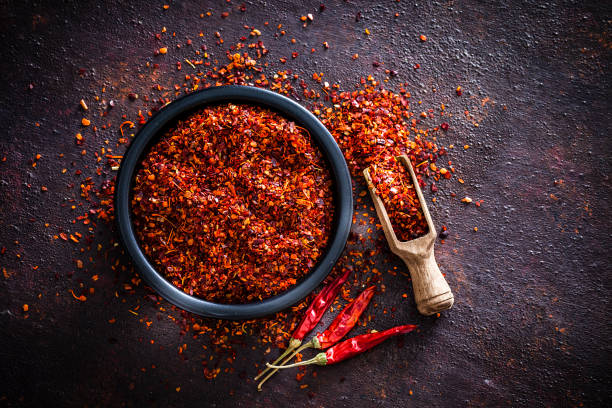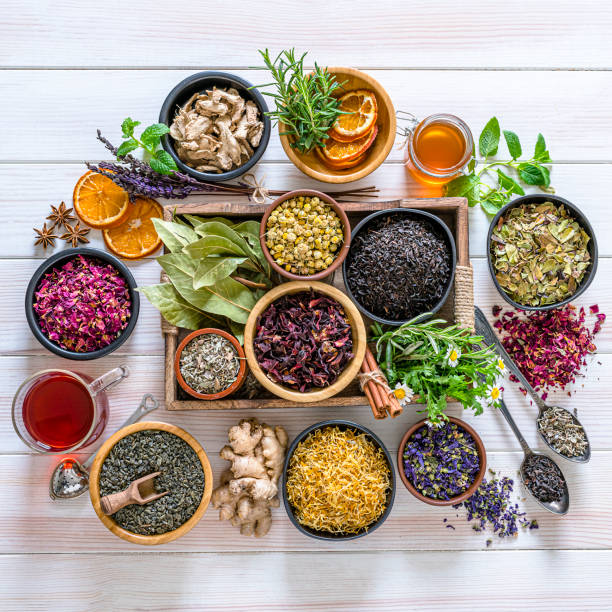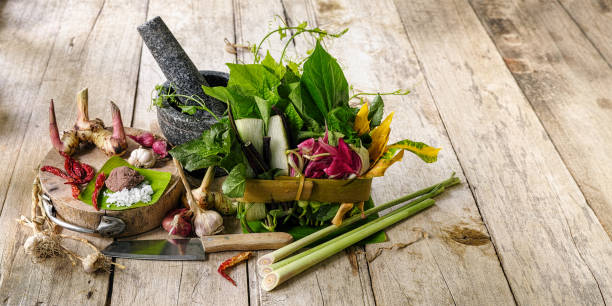Spices have been used for centuries to add flavor to any food. They are a great way to enhance food taste and provide health benefits. Moreover, spices can transform any dish, adding depth, aroma, and, in some cases, spices that add heat or intense warmth. For those who enjoy the thrill of a spicy culinary adventure, these fiery ingredients can elevate ordinary meals into extraordinary culinary experiences.
Some popular spices that add heat include chili peppers, cayenne, black pepper, and ginger. In this blog post, we will come into a world of heat and explore various spices that are renowned for their ability to add a fiery kick to your favorite dishes. See which one gives warmth to your day!
List of Spices that Add Heat
According to research in food science, a rise has been seen among people whose cuisine is emerging ethnic and one in which ingredients were previously unavailable, such as Sriracha.
New flavors have led retailers to create more flavor and heat in food products.
-Maeve Webster
In the early 1990s, the rarest person outside the local ethnicity had even tasted shishito peppers or harissa before they were introduced — and hardly heard about them before they existed. Here’s the list of spicy ingredients that elevate your food’s spice level.
1-Black Pepper
Black pepper is made from the dried unripe berries of the pepper plant. It is made from the dried berries of the Piper nigrum plant. Peppercorns are native to India but are now grown in many parts of the world. Pepper is a popular spice in many cuisines around the world.
It has a strong flavor and is a popular spice in many cuisines. It has a slightly bitter taste and a mild heat level. Black pepper can season meat, poultry, fish, vegetables, and eggs. It can also be used to make sauces, marinades, and rubs.

Pepper is a spice that adds heat to food. It can also be used in sweet dishes like chocolate cake and ice cream.
The heat in pepper comes from a chemical called piperine. Piperine is a stimulant that can increase heart rate and blood pressure. It can also cause a burning sensation in the mouth. Piperine is also thermogenic, which can help increase metabolism and promote weight loss.
Pepper has many health benefits. It is a good source of antioxidants, which can help to protect the body against damage from free radicals. Pepper can also help to improve digestion and boost the immune system. Pepper is a versatile spice that can be used to add spice in many different ways. It is a delicious and healthy addition to any diet.
2-Chili Peppers
Chili peppers are the most common spice that adds spicy flavors to food. They contain a compound called capsaicin, which gives them heat. Chili peppers can be used fresh, dried, or ground into powder. They can also make hot sauce, spicy salsa, and other condiments.
Hatch Chili Peppers
These are cultivar chili peppers grown at Hatch, New Mexico. The temperature varies from 0 to 0 degrees and is not hotter than Jalapenos. Grilling chicken chilies create a sweet-smelling flavor.
3-Cayenne Pepper

Cayenne pepper is a type of chili pepper that is known for its intense heat. Cayenne pepper, derived from dried and ground red chili peppers, is a classic spice that packs a punch. It is vibrant red color and intense heat make it a popular choice for those seeking a fiery flavor.
Cayenne pepper is versatile and can be used in many dishes, including soups, stews, marinades, and sauces. It is often used in curries, chili, and other spicy dishes. Just a pinch can infuse your plate with a delightful heat. Cayenne pepper can also be a supplement to help with weight loss and other health conditions.
4-Ginger
Ginger is a versatile spice renowned for its distinct flavor and numerous health benefits. While it may not be as famous for its heat as other spices, ginger adds a pleasant and subtle warmth to dishes, particularly in its new form.
When we think of ginger, we often associate it with its zesty and slightly sweet taste. However, ginger also contains gingerol, a compound responsible for its heat. While not as intense as chili peppers, ginger can provide a gentle warmth that enhances the overall flavor profile of a dish.
Fresh ginger, which comes in knobby root-like forms, is the most potent when it comes to heat. When sliced, grated, or minced, the heat level becomes more pronounced. The spiciness of ginger tends to vary depending on its freshness and the amount used in a recipe. Young ginger generally has a milder flavor and less heat than more mature ginger.
5-Aleppo Pepper
Aleppo pepper is another spice which comes from Syria and Turkey that it has a similar flavor to Chili peppers with an additional sweetness and fruity flavor. It is hot reminiscent of Serrano pepper and is sometimes comes in the form of dried or ground spices turn to powder form.
6-Szechuan Peppercorn
These specific peppers are members of the citrus family, which are often used in Sichuan cooking from Chinese and other Asian cuisines. The tingling sensation of adding heat begins slowly and persists long.
Bring the Heat On – How to Spice Up Your Foods Properly
When dealing with spicy foods such as ghost peppers, it’s important to know proper ways of handling peppers. Take these tips to a great spice sail and enjoy cruising.
☘️Adding Heat to Your Recipes
If the routine in the kitchen has become dull, maybe it’s time adding spice to your food. Different kinds of hot spices blended with hot sauce and peppers have different flavor profiles and heat profiles for food and dishes. Vegetables like cauliflower, broccoli, and asparagus can all be enjoyed in hot spices. Chicken, pork, shrimp, and salmon are good if tossed in spicy sauce and condiments.
☘️Use Fresh Peppers
Fresh peppers add warmth to many different foods you can prepare. This will help you understand what heat level a pepper will use. When handling very hot chilies such as ghost pepper, it can be a good idea to be careful.
Peppers with high spices can be cut with protective latex gloves. Other popular fresh peppers used as condiments include japoneros and chilies. Please visit the spices page for more info.
☘️Explore Different Types of Hot Spices
Black Pepper can be used for many foods to bring out a bit of flavor and texture. It seems like black pepper will be a milder spice on your spice rack. Hot spices include smoked hot paprika, chili powder, crushed pepper, or cayenne pepper.
Powders and dried herbs are great for keeping in your pantry for a long. Spices can easily be incorporated into food without using the most important fresh ingredients.
☘️Try Spicy Blends from Different Brands or Make Yours
Many different cultures and brands have their spices. This blend may contain various spices and herbs according to recipes. Spice blends are also very easy to make at home using recipe ideas or experimenting with random ingredients in an assortment. Spice rubs are wonderful in smokey meat such as pork or sausage.

When purchasing spices, make sure they are non-salty. The best spices concentrate on maximizing flavor and heat. When buying spicy products, you should read the product descriptions to read the temperature levels.
☘️Add Spices at the Start of the Cooking Process
Adding spices at the beginning of cooking releases their full taste. The flavorful compounds in spices undergo releasing or evaporation process during cooking. The longer the cooing time of the spices the more flavor compounds they can combine to create.
One of the best examples of this is curry making. At just the start put on the spices almost at the to bring out the best flavor in the end product. This s not applicable in all instances.
For example, fish with mild flavor, such as flounder is best to add at the end when all of the other spices are already in the dish. The reason for this is to prevent spices from overpowering the taste of the main dish.
Explore different herbs and spices mix if you want to add heat to your food. And this appears to be the quickest and most practical way to add flavor.
Frequently Ased Questions
Q: How do I use dried ginger in place of fresh?
A: Dried and fresh ginger may have different flavors, but both are effective. The rehydration process that results in dried ginger did not lessen its effect but is still comparable to that of the fresh ones. You may incorporate it into any menu that requires ginger. However, when it comes to moisture content, fresh ginger has an obviously higher content.
Dried ginger can still add flavor, but it doesn’t have the same scent or zip as fresh ginger. When using dried ginger instead of fresh, remember that the overall profile of your meal may shift slightly. Finding that sweet spot requires some trial and error, informed by your own unique sense of what sounds and tastes good.
Q: What spices make food spicier?
A: Dry spices, including cayenne or chili powder, are a common method of heating a dish more pleasantly for a hot meal. You may spice your meal at any cooking stage or incorporate spices. Its usage varies for different purposes. Sriracha hot chili sauces have many uses for making your food slightly spicy.
Q: What ingredient makes food hot?
A: Among most culprits is capsaicin, the most powerful a spicy substance that is present in most of the hot pepper varieties.
Q: What seasonings go well with chicken?
A: Like what we’ve mentioned above, ginger, paprika, and pepper may add some kick to your chicken meal. Aside from that, there are also other spices that may improve the flavor of chicken like red chili flakes. Even with just a pinch, these herbs may already give some spicy crisp. Discovering the exact proportions will result in a perfectly blended chicken meal.
Q: Which of the ground spices has the highest heat level?
A: Powder made from the Carolina Reaper pepper, the spiciest in the world. In 2013, the Guinness World Records acknowledged the Carolina Reaper pepper as the hottest chili pepper in the world. Ed Currie, the man behind the PuckerButt Pepper Company in South Carolina, was a breeder of chili peppers.
The Carolina Reaper was an end-product of breeding a crimson Habanero with a Pakistani Naga pepper. The end product is a pepper that looks and feels very different from any other on the market. It often appears bright red, though some kinds may have orange or even brown coloring.
The average Scoville Heat Unit (SHU) value of a Carolina Reaper pepper is 1,641,000, with some peppers reaching an unbelievable 2,200,000 SHU on the Scoville Heat Scale.
Q: What is the name for paprika that undergoes heating?
A: Originally from Spain, pimentón or smoked paprika is the other term for “Spanish paprika.” The heating process begins by smoking peppers on top of an oak fire to produce a sauce. The sauce has three flavor categories: sweet, bittersweet, and hot, all available in the market.
Final Thoughts
Exploring spices that add heat opens up a world of culinary excitement and intensity. From the fiery cayenne pepper to the potent ghost peppers, these spices awaken our taste buds and enrich our meals with unique flavor profiles. Whether you crave a subtle tingling sensation or a fiery explosion, incorporating these spices into your cooking repertoire can transform ordinary dishes into extraordinary culinary adventures. Remember to experiment cautiously, starting with small amounts, and gradually increase the heat as you explore the diverse realm of spices that add heat.

